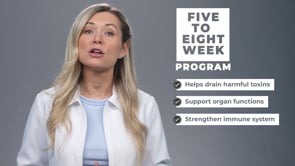Vet Insights: Cat Allergies — 5 Types Every Pet Parent Needs to Know About
Allergies are among the most common medical conditions affecting cats.
Like humans, cats can develop allergic reactions to substances they inhale, ingest, or come into contact with. Recognizing and managing cat allergies early is essential to keeping your feline healthy, comfortable, and symptom-free.
But did you know five types of cat allergies can affect your pet’s health? This guide covers everything you need to know to keep your feline safe, healthy, and happy.
What Exactly is a Cat Allergy?
Cat allergies develop when the immune system mistakenly identifies harmless substances, called allergens, as threats. This triggers an inflammatory response, causing a range of common allergy symptoms in cats.
Unlike humans, who typically experience respiratory issues, cats usually exhibit allergies through itchy skin and irritation, though other systems may be affected. Proper diagnosis and management are essential to relieving symptoms and ensuring your cat’s long-term health and quality of life.
The 5 Types of Cat Allergies and How They Affect Your Pet

While cats can develop different types of allergies, these often share similar symptoms despite having distinct causes. Understanding the specific trigger is essential for proper treatment and ensuring your cat’s long-term health and comfort.
These include flea allergy dermatitis, food allergies, atopic dermatitis, contact allergies, and other less common allergic reactions in cats. Each type will be explained in detail in the following sections to help you identify and manage your cat’s symptoms effectively.
#1. Flea allergy dermatitis (FAD)
Flea allergy dermatitis, or FAD, is the most common allergy in cats, triggered by a reaction to proteins in flea saliva. Even a single bite can cause intense itching and skin irritation, making prompt flea control essential for your cat’s comfort and health.
A single flea bite can trigger intense itching in cats, leading to excessive scratching, chewing, hair loss, and painful scabs or open sores. Without prompt treatment, these symptoms can progress to secondary bacterial infections, such as pyoderma, further impacting your cat’s health and comfort.
FAD commonly affects the rump and base of the tail, often causing small scabs around the head and neck, a condition known as miliary dermatitis. This allergy can flare up year-round, especially in indoor cats, making consistent flea prevention essential for managing symptoms.
#2. Food allergy
A food allergy in cats is triggered by an abnormal immune response to specific foods or additives in their diet. This reaction can cause skin irritation, gastrointestinal problems, and ongoing discomfort if the allergen isn't identified and eliminated.
Cat food allergies are most often triggered by animal proteins like beef, chicken, fish, or dairy, but vegetable proteins, additives, and preservatives can also cause reactions. Common symptoms include persistent itching, digestive issues such as vomiting or diarrhea, and, in some cases, respiratory distress.
In cats with food allergies, itching commonly affects areas like the head, ears, belly, legs, and paws, with symptoms often appearing year-round. While the age of onset varies, food allergies typically develop before age two, and certain breeds, such as Siamese cats, may be more susceptible.
#3. Atopic dermatitis
Atopic dermatitis, also known as environmental allergies, occurs when cats develop allergic reactions to airborne allergens like pollen, dust mites, or mold. Without proper care, this condition can cause ongoing itching, skin inflammation, and significantly reduce your cat’s comfort and quality of life.
Common environmental allergens in cats include pollen (ragweed, cedar, grass), dust mites, mold, mildew, and animal or human dander. While pollen allergies are often seasonal, allergens like dust mites and mold can trigger symptoms year-round, requiring ongoing management.
Environmental allergies in cats typically cause severe, widespread itching and inflamed skin. In some cases, they can also lead to respiratory problems such as rhinitis or asthma, affecting approximately 15% of allergic cats.
Atopic dermatitis in cats is often a lifelong condition that requires consistent, long-term management to control symptoms. They are more commonly seen in purebred cats like Abyssinians and Devon Rex, and domestic shorthairs under three years old.
#4. Contact allergy
Feline contact allergies are the least common type of allergy in cats, occurring when the skin reacts to direct contact with certain substances. Triggers may include materials like plastics, fabrics, cleaning products, or grooming supplies, leading to localized itching and skin irritation.
To emphasize, contact allergies in cats result from a localized skin reaction when their skin comes into direct contact with an irritating substance. Common triggers include shampoos, flea collars, bedding materials, detergents, dyes, insecticides, and certain plants, leading to itching and skin irritation.
Contact allergies in cats typically cause skin irritation and itching on sparsely haired areas such as the belly, armpits, and groin where the allergen touches the skin. Fortunately, identifying and removing the irritant usually resolves the symptoms without the need for long-term treatment.
#5. Other types of feline allergies
In addition to common allergies, cats can develop other allergic conditions, such as cutaneous drug eruptions—skin reactions caused by certain medications. Another example is allergic bronchitis, also known as feline asthma, which leads to chronic coughing and breathing difficulties.
Additionally, anaphylactic shock is a severe, life-threatening allergic reaction that can occur due to medications, vaccines, certain foods, insect bites, or stings. While less common, these allergies require prompt veterinary attention to manage symptoms and prevent serious health complications.
What are the Signs of Allergies in Cats?
Cat allergies can affect the skin, respiratory system, and digestive tract, leading to a wide range of symptoms. Common signs include itching, coughing, sneezing, vomiting, diarrhea, and other indicators that signal an allergic reaction.
Skin symptoms
- Swollen, sensitive paws: Inflammation or tenderness in the paws caused by allergic reactions or excessive licking.
-
Intense itching: Frequent scratching, chewing, licking, or rubbing due to persistent skin irritation.
- Skin lesions: Sores, scabs, crusting (often seen as miliary dermatitis), along with small lumps, bumps, or feline acne.
- Excessive grooming: Over-licking that leads to hair thinning, irritation, or even bald patches.
- Inflammation: Red, dry, or swollen skin, sometimes developing into eosinophilic plaques—raised, itchy lesions linked to allergies.
- Ear infections: Red, foul-smelling, and painful ears, often accompanied by head shaking or scratching due to allergic inflammation.
- Hair loss: Symmetrical hair loss, especially around the neck, ears, tail base, rump, or groin, often paired with a dull or unkempt coat.
Respiratory symptoms
- Difficulty breathing/shortness of breath: A serious sign of allergic reaction—seek immediate veterinary care if your cat shows labored breathing.
- Snoring: Caused by airway inflammation, leading to noisy breathing during rest or sleep.
- Sneezing, coughing, and wheezing: Typical signs of respiratory irritation from airborne allergens like pollen, dust, or mold.
- Nasal or ocular discharge: Watery or mucus-like discharge from the nose or eyes, indicating allergic inflammation of the respiratory passages or sinuses.
Digestive symptoms
- Vomiting, flatulence, and diarrhea: Frequent digestive upset is a common sign of food allergies or sensitivities.
- Upset stomach and changes in appetite: Allergies can cause nausea, reduced appetite, or, in some cases, a sudden increase in hunger due to poor nutrient absorption.
- Blood in stool: Indicates intestinal inflammation or irritation, often linked to allergic reactions affecting the digestive tract.
- Scooting: Dragging the rear on the floor may signal anal gland irritation or allergic inflammation.
- Associated with Inflammatory Bowel Disease (IBD): Chronic digestive symptoms can be connected to IBD, a condition sometimes triggered or worsened by allergies.
Clinical signs of anaphylactic shock in cats
- Facial swelling: Puffiness around the lips, nose, and eyes, often indicating an acute allergic response that requires prompt attention. An indicator of anaphylaxis.
- Hives: Raised, itchy bumps on the skin, signaling a sudden allergic reaction to food, insect bites, or contact allergens. Another sign of anaphylaxis.
- Difficulty breathing: Due to the swelling of the face and throat, cats will have difficulty breathing, which makes this type of allergic reaction an emergency.
- Hypothermia: Drop in body temperature due to shock.
- Collapse: Due to a sudden drop in blood pressure (hypotension) and insufficient blood flow to vital organs. Note: If this is your cat’s case, seek veterinary assistance immediately.
How Does a Vet Diagnose Allergies in Cats?

Diagnosing cat allergies requires a thorough, step-by-step approach by your veterinarian to pinpoint the exact cause of your cat’s symptoms. This process often involves ruling out other conditions, conducting allergy tests, and carefully observing your cat’s response to treatments or dietary changes.
Initial assessment
The diagnostic process begins with a thorough assessment of your cat’s medical history and a comprehensive physical examination.
Your veterinarian will check for fleas, skin mites, bacterial or fungal infections like ringworm, and other underlying health issues that can mimic allergy symptoms. It's important to note that not all itching or skin problems in cats are caused by allergies.
Rule-out process
Diagnosing cat allergies involves a careful rule-out process, where your veterinarian systematically eliminates other potential causes of your cat’s symptoms. Conditions like parasites, infections, or hormonal imbalances must be excluded before confirming an allergy.
This methodical approach ensures an accurate diagnosis and the most effective treatment plan for your cat’s long-term health.
Specific cat allergy testing methods
After the initial assessment and rule-out process, your veterinarian may recommend specific allergy tests to identify the exact trigger. These tests may include:
Food allergy diagnosis
- Elimination diet trial: The most reliable method involves a veterinarian-supervised elimination or hypoallergenic diet using novel or hydrolyzed proteins.
- Strict adherence required: Only the prescribed diet should be fed—no treats, human food, or flavored medications—as even small amounts of other foods can invalidate results.
- Duration: The special diet must be followed exclusively for at least 8 to 12 weeks to properly assess for improvement.
- Challenge phase: If symptoms improve, the original diet or individual ingredients are reintroduced to confirm the allergy by observing if symptoms return.
- Avoid commercial tests: Blood, saliva, and hair tests marketed for food allergies in cats are unreliable and not recommended for accurate diagnosis.
Atopy or environmental allergy diagnosis
- Diagnosis by exclusion: Environmental allergies are often diagnosed after ruling out other types of allergies, such as food or contact allergies.
- Allergy blood tests (IgE Tests): These tests help identify specific environmental allergens by measuring the immune system's response.
- Intradermal skin testing: A veterinary procedure that involves injecting small amounts of allergens beneath the skin to identify specific allergic triggers based on localized reactions.
Contact allergy diagnosis
- Diagnosis based on history and lesions: Contact allergies are often suspected by evaluating your cat’s medical history and the location of skin lesions, typically in areas that come into direct contact with allergens.
- Avoidance or patch testing: Diagnosis may involve avoiding the suspected substance or performing a patch test to confirm the allergen causing the reaction.
How Do You Treat and Manage Feline Allergies?
There is no quick cure for cat allergies, as they are typically lifelong conditions, but proper management can greatly reduce symptoms. With the right treatment plan, you can help your cat stay comfortable and maintain a better quality of life.
Working closely with a veterinarian is crucial for effective allergy
management and ensuring your cat’s long-term health.
Close collaboration with your veterinarian or a pet homeopathy expert is essential for accurate diagnosis, effective treatment, and long-term allergy management. Since treatment plans are often multifaceted, ongoing adjustments are necessary to ensure the best results for your cat’s health and comfort.
Avoiding allergens should be a top priority in managing your cat’s healthand preventing allergy flare-ups.
The most effective way to manage cat allergies is to avoid exposure to known allergens whenever possible. Preventing contact with triggers can significantly reduce symptoms and improve your cat’s quality of life.
- Flea allergy in cats: Implement strict, year-round flea control on both your cat and its environment using veterinarian-approved products to prevent flare-ups.
- Food allergy in cats: Maintain a lifelong diet of veterinarian-recommended novel or hydrolyzed protein formulas, and avoid all treats or foods containing the offending ingredients.
- Environmental and contact allergies in cats: Minimize exposure to pollens, dust, molds, chemicals, and other irritants by using dust-free litter, regularly washing bedding, keeping your home clean, using air purifiers, and avoiding smoking or strong fragrances around your cat. Remove any known contact allergens from your cat’s environment.
Medications
Medications are often prescribed to block allergic reactions, relieve itching, and address secondary issues like infections or inflammation. These treatments help manage symptoms and improve your cat’s comfort, especially when allergen avoidance alone isn’t enough.
- Immunomodulators: Effective in controlling itching (pruritus) in allergic cats, though primarily licensed for dogs—used under veterinary guidance.
- Immunosuppressants: Reduce hypersensitivity by targeting immune cells; may take up to 30 days for full effect.
- Antibiotics and antifungals: Treat secondary bacterial or yeast infections caused by excessive scratching and damaged skin or ears.
- Topical therapies: Medicated shampoos, conditioners, ointments, ear drops, and lotions help soothe irritated skin and manage localized infections.
- Corticosteroids: Fast-acting anti-inflammatory drugs that block allergic reactions and relieve itching; suitable for short-term use but require monitoring if used long-term.
- Antihistamines: May help reduce allergy symptoms, though response in cats is variable and they are less effective for acute flare-ups; typically take 7–10 days to show results—always consult your vet for proper dosing.
Immunotherapy
Immunotherapy (allergy shots or drops) offers a personalized treatment for cats suffering from environmental allergies. By gradually building tolerance to specific allergens, this therapy can significantly reduce allergic reactions and provide long-term relief.
Immunotherapy gradually desensitizes your cat’s immune system by introducing small, increasing doses of specific allergens over time. This treatment is delivered through either regular injections or liquid drops placed under the tongue, offering a long-term solution for managing environmental allergies.
This type of medication requires patience and long-term commitment, as it may take 6 to 12 months to show noticeable improvement. While it’s considered the most effective long-term treatment for environmental allergies, the goal is often to reduce symptom severity, and additional medications may be needed during flare-ups.
Natural Solutions for Managing Cat Allergies Effectively
Many pet parents assume that conventional medications are the only way to manage cat allergies, but natural alternatives are also available. These safe and effective options include:
Supplements
- Essential fatty acids (fish oil): Help strengthen your cat’s skin barrier, reduce inflammation and irritation, and minimize future allergy flare-ups. Consistent use is key, as benefits typically appear after several weeks.
- Probiotics: Promote digestive health and strengthen the immune system, which can help manage allergic skin reactions by restoring balance to the gut and reducing inflammation.
Supportive care
- Soothing baths: Bathing with gentle, hypoallergenic shampoos (such as oatmeal-based formulas) can help relieve itching and calm irritated skin.
- Physical barriers: Using protective clothing or cones can prevent self-inflicted injuries caused by excessive scratching or licking.
- Emergency care: Severe respiratory distress in cats may require immediate veterinary attention, including hospitalization and oxygen therapy to ensure proper breathing and stabilize their condition.
A trusted natural solution to help cats suffering from allergies
Zumalka’s GENERAL DETOXIFICATION KIT combines KIDNEY DRAINER, LIVER DRAINER, LYMPH DRAINER, ENVIRONMENTAL DETOX, and PROBIOPET to help cleanse your pet’s body, support organ function, and strengthen the immune system naturally.
KIDNEY DRAINER is a homeopathic blend that is specially crafted to naturally detoxify your pet's kidneys and rejuvenate both the kidneys and urinary tract functions, without harmful chemicals. This effective and affordable remedy supports toxin elimination and enhances your pet’s overall well-being.
LIVER DRAINER is a natural homeopathic remedy specially formulated for liver pain, congestion, and supports detoxification in cases of liver-related issues. By promoting toxin drainage, it helps improve liver function, aids digestion, and reduces symptoms like vomiting, stomach discomfort, and bloating, supporting your pet’s overall liver health.
LYMPH DRAINER is a natural, cost-effective remedy that supports detoxification and drainage of the lymphatic system to enhance your pet’s immune function. It helps address issues like water retention, fatty tissues, polyps, and spleen or venous congestion caused by a sluggish lymphatic system, promoting better overall health.
ENVIRONMENTAL DETOX is a natural solution that helps stimulate liver and kidney function to aid in toxin removal and heavy metals from your pet’s body. It effectively targets symptoms of toxin overload—like skin irritations, digestive upset, muscle weakness, and unexplained weight loss—helping to rebalance your pet’s health and vitality.
PROBIOPET is a high-quality, shelf-stable probiotic designed to support your pet’s digestive health, promote balanced gut flora, and strengthen immune function. Ideal for managing issues like constipation, diarrhea, bloating, and gas, it helps stabilize colon health and overall digestion, without the need for refrigeration.
How to Comfortably Live with a Cat with Allergies: Practical Tips for Everyday Care

Cat allergies are lifelong conditions without a definitive cure, but with consistent veterinary care and dedicated management, symptoms can be effectively controlled. Frequent flare-ups are common, making ongoing monitoring and proactive treatment essential for maintaining your cat’s comfort and health.
Regular follow-up appointments with your veterinarian or consultations with a pet homeopathy expert are essential to track your cat’s progress and ensure effective allergy management. Ongoing monitoring allows for timely adjustments to treatment plans, helping to prevent flare-ups and maintain your cat’s long-term health and comfort.
How to Know When Your Cat’s Allergies Need a Vet Visit
If your cat shows signs of allergies, such as persistent itching, digestive upset, or respiratory issues, schedule a veterinary consultation to confirm the diagnosis and begin treatment.
However, if your cat has trouble breathing, shows shortness of breath, or breathes with an open mouth, seek emergency veterinary care immediately, as these symptoms indicate a life-threatening condition.
Always consult your veterinarian before starting any new medication, including over-the-counter products. It is also helpful to consult a pet holistic care specialist before adding supplements or home remedies for your cat.
If your cat’s symptoms worsen, change, or fail to improve with treatment, prompt veterinary guidance is essential to adjust care and prevent complications.
Schedule regular veterinary follow-ups and pet homeopathy expert consultations to monitor your cat’s allergy management, adjust treatments as needed, and ensure long-term health and comfort.
FAQs
How can you tell if your cat has allergies?
Cats with allergies often show skin problems such as itching, scratching, scabs, and hair loss, but these symptoms can also indicate other conditions.
Respiratory and digestive issues may occur as well, so a proper diagnosis requires veterinary testing to confirm allergies and rule out other causes. Additionally, consulting with a qualified pet homeopath can offer complementary insights and support, particularly in managing chronic allergy symptoms through holistic approaches.
What are the most common allergies in cats?
Flea allergy is the most common type of allergy in cats, followed by food allergies and environmental allergies such as atopic dermatitis. Recognizing these common allergens is key to effective management and improving your cat’s health and comfort.
What can I give my cat for allergies?
Always consult your veterinarian or a pet homeopathy expert before starting any medication or supplement for your cat’s allergies.
Treatment varies based on the type of allergy and may include prescription diets, medications like steroids or antihistamines, natural supplements such as fatty acids and probiotics, or long-term solutions like immunotherapy.
Can indoor cats have seasonal allergies?
Yes, indoor cats can develop allergies to common triggers like dust mites, mold, pollen, household products, and even certain foods. Despite staying indoors, they are still exposed to allergens that can cause skin, respiratory, or digestive reactions.
The Bottom Line
Cat allergies are a common and challenging condition, causing symptoms like itchy skin, respiratory problems, and digestive issues that impact both pets and owners. Proper diagnosis requires a thorough veterinary evaluation, including physical exams, allergy testing, food trials, and ruling out other potential causes to identify the specific allergen.
While cat allergies are chronic, they can be effectively managed through strategies like allergen avoidance, medications, supplements, and immunotherapy. Long-term success depends on close collaboration with your veterinarian or pet homeopathy specialist, ensuring improved comfort and a better quality of life for your cat.








The blog post on Zumalka addresses the reality of hypoallergenic cats, clarifying common misconceptions. While no cat is completely hypoallergenic, certain breeds produce fewer allergens, making them a better choice for allergy sufferers.
I want to thank you for this informative post! Being a Persian cat enthusiast, I really appreciate learning about hypoallergenic breeds. This is crucial information for individuals who are allergic to cats and are looking for a potential feline companion. Your detailed insights make it easier to find the perfect cat. I’m looking forward to exploring more on your blog.
This blog provides valuable insights into hypoallergenic cat breeds, helping pet lovers with allergies make informed choices.
You’re very welcome, Cat Exotica !
I really appreciate the detailed explanation of hypoallergenic cat breeds. As somebody who is allergic to cats, this guide gives me hope about finding a furry companion. It’s informative and comprehensive, and it helps potential pet owners to choose allergy-friendly options. Thank you for providing this valuable resource.
Leave a comment